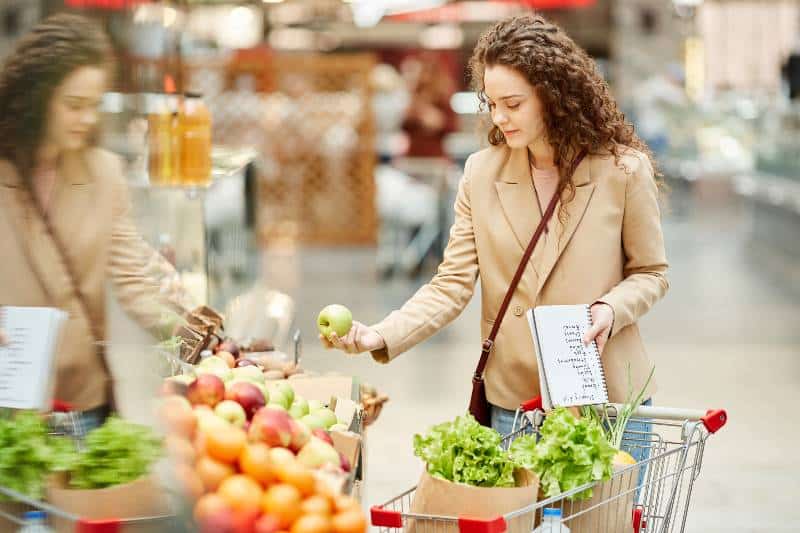What You Need To Know About Grocery Shopping in Thailand
Whether you’re traveling to Thailand for business or pleasure, one of the must-dos while you’re there is experiencing the culture and convenience stores that the country has to offer. For a true taste of Thai life, head out on an adventure with us, as we explore what to expect from grocery shopping in Thailand. From navigating your way around different shops and discovering exotic ingredients — it can be an immersive experience like none other! Whether top shelf produce is what you’re after or some budget buys without compromising on quality; in this post we discuss how best to get your grocery fix while visiting Thailand.
Key Takeaways
- The country boasts a plethora of unique ingredients, from exotic fruits to local spices, that are worth exploring.
- Thailand offers a mix of traditional markets and modern supermarkets, each providing a unique shopping experience.
- Understanding local customs and etiquettes, such as bargaining practices, can enhance the shopping experience and foster positive interactions.

Types of Grocery Stores in Thailand
Thailand has a diverse retail landscape that includes traditional markets, modern supermarkets, and specialized stores, all catering to different consumer preferences and needs. Each type of store offers a unique shopping experience and array of products.
Traditional Markets
Traditional markets in Thailand are a fundamental part of community life, and serve as both social hubs and places to buy local produce such as fruits, vegetables, spices, fresh meat, fish, and household essentials. Shoppers can often bargain for items in these types of markets, and they usually carry daily essential goods that cater to the local lifestyle.
Vendors at these markets often carry super-fresh produce from a region’s farms, making these markets highly popular for those seeking locally grown, regional specialties. While the atmosphere can be chaotic with the hustle and bustle of vendors and shoppers, it’s a cultural experience filled with a variety of Thai food and goods that’s unique to Thailand.
Modern Supermarkets
In contrast to traditional markets, modern supermarkets in Thailand offer a more structured and comfortable shopping environment. Becoming increasingly popular, they carry a wide variety of domestic and international brand-name items.
Supermarkets like Tesco Lotus, Big C, and Tops Market, are well-established in Thailand, offering an assortment of products across food, beauty, electronics, and household items. These supermarkets are known for their consistency in product availability, fixed prices, and a convenient shopping environment, including amenities like air conditioning and parking spaces.
Specialty Stores
Specialty stores tend to focus on a specific product category, like wine, gourmet food, health foods, or organic products. They carry a range of products that are usually of high quality and unique compared to what’s offered in regular supermarkets. Well-known specialty stores in Thailand include Wine Connection for a wide assortment of international wines and Villa Market, which specializes in imported Western food and goods.
Organic Markets
With the increasing demand for fresh, organically grown produce, organic markets have been emerging in Thailand. These markets sell goods that are grown without synthetic pesticides and fertilizers, and often carry a selection of health foods and other organic products. Organic markets, such as Lemon Farm and Sunshine Market, offer a boutique shopping experience with a focus on health and sustainability.
In conclusion, the type of grocery store a person prefers may depend on their shopping preferences, such as prices, product variety, proximity, and shopping environment. Whether you prefer the vibrant atmosphere of traditional markets, the convenience and product variety of modern supermarkets, or the specific offerings of specialty and organic stores, Thailand offers a diverse range of choices catering to everyone’s needs.
Popular Thai Grocery Brands
Ah, Thailand! A country known for its rich culture, stunning beaches, and of course, its unique and flavorful cuisine. But did you know that Thailand also boasts a variety of popular local grocery brands that cater to the diverse needs of its residents and tourists alike? Let’s dive into some of the top local grocery brands in Thailand and highlight some of the unique Thai products that you might not find anywhere else.
1. Big C Group: This is one of the major players in the Thai supermarket scene. The Big C group includes various formats such as the Mini Big C, Big C Supercenter, Big C Extra, and Big C Foodplace. If you’re ever in Pathum Thani, you might spot a Big C store bustling with activity.
2. Central Food Retail Group: A part of the renowned Central Retail Corporation, this group manages several supermarket chains including Central Food Hall, Tops Daily, Tops Market, Tops Superkoom, and Tops SUPERSTORE. Each of these stores offers a unique shopping experience tailored to different customer needs.
3. Gourmet Market & Home Fresh Mart: These are part of The Mall Group and are known for their upscale products and premium quality goods. If you’re looking for gourmet ingredients or high-end products, this is the place to be. More about Home Fresh Mart
4. Makro: Originally a part of Metro AG, Makro is a wholesale center that caters not just to individual customers but also to businesses. It’s a great place to find bulk products at competitive prices.
5. Lotus’s Group: This group includes Lotus’s go fresh, Lotus’s, and Lotus’s Talad. Each of these stores has its own specialty, ensuring that shoppers have a variety of options to choose from.
6. Villa Market: A popular choice among expatriates and locals alike, Villa Market offers a range of imported products that might be hard to find in other local stores.
7. Super Cheap: As the name suggests, Super Cheap is known for its affordable prices. But don’t let the name fool you; they offer a wide range of products without compromising on quality.
Apart from these major chains, there are several other local brands like 108 Shop, 7-Eleven (yes, they’re huge in Thailand!), CP Fresh Mart, CJ Express, Foodland, Jiffy, Lawson 108, Rimping, Spar, and UFM Fuji Super, each offering a unique shopping experience.
Now, when it comes to unique Thai products, the list is endless. From exotic fruits like rambutan and mangosteen to local snacks like dried squid and shrimp chips, to the famous Thai spices and curry pastes, there’s a plethora of products that are quintessentially Thai. And let’s not forget the wide range of Thai sauces, including the world-famous fish sauce and tamarind paste, which are staples in Thai cooking.
Thailand’s grocery scene is as diverse and vibrant as its culture. Whether you’re a local resident, an expatriate, or a tourist, there’s always something new and exciting to discover in Thai supermarkets. So, the next time you’re in Thailand, make sure to take a stroll down the aisles of these local grocery stores and immerse yourself in the rich flavors and products of this beautiful country
Cost of Groceries in Thailand
The cost of groceries in Thailand can significantly differ from those in Western countries due to a variety of factors including local production, import taxes, and cost of living.
Comparison with Western Countries
On average, groceries in Thailand are less expensive than in Western countries, primarily because many items, such as tropical fruits, vegetables, fresh meat, and fish, are locally sourced and produced.
However, imported goods, especially those from Western countries, can be more expensive in Thailand due to import taxes. This includes items such as dairy products, cereals, and certain processed foods.
For instance, a liter of milk typically costs around 50 THB (approx. $1.50 USD) in Thailand, while the same may cost around $0.70-$0.90 USD in the United States, depending on the state and brand.
On the other hand, locally available items like a kilogram of rice, which usually costs less than 40 THB (approx. $1.15 USD) in Thailand, might cost around $2-4 USD in the United States, depending on the quality and brand.
Tips for Budget Shopping
Here are some useful tips for budget shopping in Thailand:
- Local Markets: Shopping at local markets can be significantly cheaper than purchasing groceries at supermarkets, especially for fresh produce and local products.
- Seasonal Shopping: Prices for fruits and vegetables can vary depending on the season. Shopping for in-season produce can help reduce costs.
- Buy Local Brands: Local Thai brands are usually cheaper than their imported counterparts. Opt for these, where possible, to save on your grocery bills.
- Street Food: Thailand is famous for its street food, which is often cheaper and just as hygienic and tasty as restaurant food.
- Price Comparison: Different stores may sell the same product at varying prices. Regular supermarkets tend to be cheaper than specialty stores, so it might be worthwhile to shop around.
- Discounts and Promotions: Keep an eye out for discounts and promotions in supermarkets or online grocery shopping. Weekly or monthly promotions are common.
Remember that prices can vary greatly depending on the region in Thailand, with tourist areas and larger cities like Bangkok generally being more expensive than rural areas. Consequently, being mindful of your grocery shopping practices will ensure you get the most value for your money.
Cultural Etiquette and Tips
Understanding and respecting the cultural customs of Thailand can foster positive interactions and enhance your shopping experience.
Interaction with Vendors
Showing courtesy and respect is important when interacting with vendors in Thailand. Here are some key etiquettes:
- Respectful Greetings: Thais greet each other with a “wai”, a gesture where the palms are brought together in a prayer-like manner at the chest or nose level, and the head is slightly bowed. Although this might not be expected from foreigners, it is appreciated and shows respect towards Thai culture.
- Politeness: Politeness goes a long way in Thailand as the Thai culture places a high value on harmony and non-confrontation. Always remember to say “ka” (for females) and “khrap” (for males) at the end of sentences as a sign of politeness.
- Avoid Touching Heads: In Thai culture, the head is considered sacred. Therefore, avoid touching someone’s head as it may be seen as disrespectful.
- Calm and Patient Demeanour: Thais value serenity highly, deeming angry or aggressive behaviour as inappropriate. Always handle any misunderstandings or disputes calmly and politely.
Bargaining
In Thailand, bargaining is generally accepted and quite common, especially in local markets and street shops where the prices are not fixed. That said, politeness and respect are essential when bargaining. A friendly smile and polite demeanor can often lead to better prices. Here are some tips for bargaining effectively:
- Know the Average Prices: Having a rough idea of what the item should cost helps you avoid getting overcharged and gives you a starting point for bargaining.
- Start Low, But Not Too Low: Initial offerings should be lower than your maximum price, but going too low may be seen as offensive. A good opening bid would be around 20-30% lower than the asking price.
- Friendly Negotiation: Always maintain a friendly, positive tone during the negotiation. Anger or frustration can be counterproductive.
- Be Ready to Walk Away: If the price doesn’t meet your budget, politely decline and begin to walk away. Often, vendors will call you back with a better offer.
Remember, while bargaining can help you get a good deal, it’s also important to consider the livelihood of the vendors. Aim for a price that is fair and reasonable for both parties.
Unique Thai Ingredients to Try
Thailand is a culinary paradise with a wealth of diverse and exotic ingredients. The following items are not only unique to Thai cuisine but also add unparalleled flavor and zest to a variety of dishes.
Exotic Fruits
- Durian: Often referred to as the ‘king of fruits’, durian is famous for its strong smell and unique taste. It’s creamy, rich, and a mix of sweet and savory flavors. Durian can be eaten fresh or used to flavor sweets and desserts like ice cream and sticky rice.
- Mangosteen: Known as the ‘queen of fruits’, mangosteen has a soft, juicy, and tangy-sweet flesh under a thick purple rind. It’s generally consumed fresh and chilled.
- Rambutan: This fruit, characterized by its hairy appearance, has a sweet and sour flavor. The fleshy part inside the rambutan tastes similar to lychee and can be eaten fresh.
Exotic Vegetables
- Bitter Melon: As the name suggests, this melon has a bitter taste. It’s often used in soups and stir-fried dishes.
- Snake Beans (Yardlong Beans): Longer than common green beans, snake beans are often chopped and used in stir-fried dishes, salads, and curries.
- Banana blossom: The tender hearts of banana blossoms are used in salads and curries. They have a slightly bitter flavor and crunchy texture.
Spices and Condiments
- Galangal: Similar to ginger, galangal is a root used for its aromatic flavor in soups, such as Tom Kha Gai (Chicken Coconut Soup).
- Kaffir Lime Leaves: These leaves are well-known for their vibrant, citrusy flavor. They are used in Thai curries and soups for added fragrance.
- Bird’s Eye Chili: These tiny chilies pack a serious punch. They’re frequently used to add spice in Thai dishes.
Incorporating these unique Thai ingredients into your cooking can introduce new flavors and broaden your culinary repertoire. The key is to explore and experiment with different combinations and proportions, adhering to your personal preference and tastes. Always remember, with Thai cooking, the goal is to create a balance of sweet, sour, salty, bitter, and spicy flavors.
Sustainability and Environment
Thailand has recognized the need for sustainable management of plastic waste and has implemented numerous measures to address the issue. The government has set goals to reduce plastic waste and promote eco-friendly shopping practices, while local businesses and communities work together to make the country more environmentally friendly.
Strategies and Initiatives
Thailand’s approach to plastic waste management encompasses a variety of strategies, including:
- Policy Measures and Bans: The government has implemented bans on single-use plastics, including plastic bags, food containers, straws, and cups. It also aims to phase out selected plastic products by 2022 and achieves recycling rates of up to 60% by 2027.
- Promoting Recycling and Waste Collection: Thailand emphasizes improved waste collection and recycling infrastructure, encouraging local community involvement in waste management.
- Adopting a Circular Economy: Thailand is pushing for circular economy principles, where businesses redesign their production and consumption processes to reduce waste and promote sustainability.
- Raising Public Awareness and Participation: Multiple public awareness campaigns and educational programs have been initiated to highlight the importance of reducing plastic waste and adopting sustainable practices.
Eco-Friendly Shopping: Tips and Best Practices
Encouraging eco-friendly shopping habits is an essential part of Thailand’s efforts to reduce plastic waste. Follow these tips to shop sustainably:
- Bring Your Reusable Items: Carry a reusable tote bag, reusable food containers, and a refillable water bottle to avoid single-use plastic bags, containers, and bottles.
- Shop at Local Markets: Patronize local markets that sell fresh food, often packaged in eco-friendly materials or without any packaging at all.
- Buy in Bulk: Purchase bulk items, like rice or pasta, using your reusable containers and bags at selected stores to minimize plastic use.
- Say No to Single-use Plastic Cutlery: Opt for reusable or compostable alternatives when ordering takeout or decline single-use plastic cutlery when it’s offered.
Specialty Stores and Organic Markets in Thailand
Support local specialty stores and organic markets that prioritize sustainability. These establishments often offer a variety of eco-friendly, locally sourced, or organic products in minimal packaging.
- Rimping Supermarket (branches in Chiang Mai, Lampang, and Lamphun) offers a ‘Naked Clean’ section, where customers can buy bulk organic products using their reusable containers.
- Bangkok Farmers Market is a weekend market featuring fresh, locally produced organic fresh fruits, vegetables, and other specialty items in environmentally friendly packaging.
- Radiance Wholefoods is an online shop and physical store in Bangkok, selling organic products and promoting sustainable practices like reusable container policies for purchases.
- Happy Grocers in Phuket offers a range of eco-friendly and sustainable products, including bulk food, personal care, and household items.
By incorporating eco-friendly shopping habits and supporting sustainability-focused businesses, whether you reside in or visit Thailand, you are taking an essential step towards contributing to the country’s efforts to reduce plastic waste and adopt greener living practices.

Grocery Shopping in Thailand FAQs
What are the popular local grocery brands in Thailand?
Popular grocery brands in Thailand include Naraya, Central Food Retail, Big C, and Tesco Lotus.
How do I navigate language barriers while shopping?
If you’re struggling to communicate with shopkeepers, it can be helpful to have a local friend or tour guide on hand who is familiar with the language. Alternatively, writing down what you want in Thai and showing it to the storekeeper can also help.
Are credit cards widely accepted in Thai grocery stores?
Most supermarkets in Thailand accept credit cards. However, it’s always best to check with the store beforehand as a smaller grocery shop may not have card payment facilities.
Is there an app for grocery shopping in Thailand?
Yes! Several apps such as HappyFresh and Shopee offer online delivery services from a range of stores across the country.
What are some eco-friendly shopping practices in Thailand?
It’s always a good idea to bring along your own shopping bag and avoid using single-use plastics. If possible, opt for local produce that is in season and less likely to be laden with chemicals or preservatives. Additionally, some supermarkets provide crates where customers can return plastic bottles for recycling.
Are there any cultural etiquettes I should be aware of?
It’s always polite to greet storekeepers when entering a shop and thank them when leaving. It’s also important to be aware of the cultural norms in Thailand, such as dressing conservatively and being respectful. Additionally, most stores have specific days for discount shopping so it’s helpful to plan ahead if you are looking for bargains! With these
Conclusion
Thailand offers a unique and unforgettable grocery shopping experience due to the mix of modern stores and traditional markets available (like local wet markets). Exploring the plethora of different ingredients available is an excellent way to get a deeper insight into the fascinating culture of Thailand and its diverse cuisine. Lastly, it’s important to pay attention to local customs and etiquettes including bargain practices when engaging in interactions with vendors or shopkeepers.
We hope our guide has been helpful in giving you an introduction to shopping for you to buy groceries groceries in Thailand. For more advice about living life in this beautiful country, make sure to subscribe to our newsletter or reach out to us with any questions you may have!






